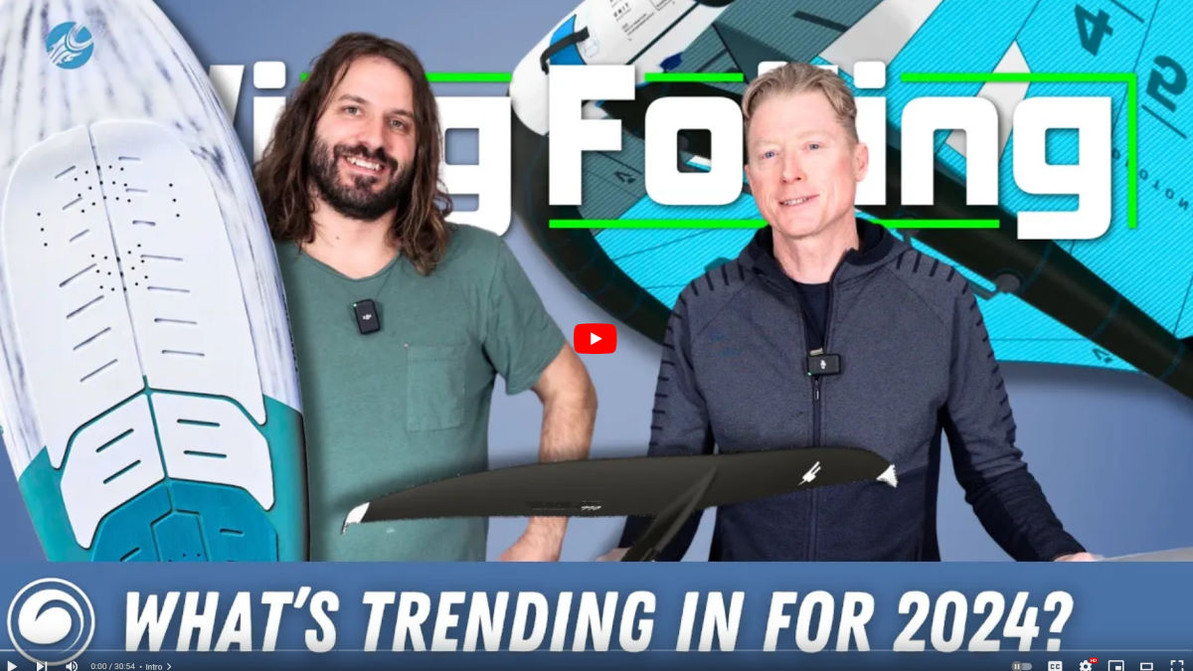Wing Foiling | Top Gear Trends That Will Shape Your 2024 Season
Jeff and Tucker take some time out to have a conversation about the trends they're seeing for winging. What can we expect for 2024? What seems to be on the way out? Here are their thoughts- see if you agree.
Jeff: Are we about four or five years into wing foiling from its start now?
Tucker: Yeah, a little more than that, depending on when you want to say it started.
Board Designs
Jeff: So now we're starting to see some trends that are sticking and others that might be trending out. One that I can start with would be the full sinker board. When I first got into foiling, I started with a big board. I can equate this to my years of windsurfing, where you start on your big board and then it's a race to the smallest, because if you're on a small board you must be really good. Then you're the local hero who's on that little board. I've ridden all the way down to a 54 liter. At 175 lbs, it is a full sinker. It's under the water. Could I do it? Yes. Did I have fun when I was riding in powered conditions? Yes. Did I feel it had some benefits in the waves? Yeah, though not as much as my daily driver, a 60 or 70L.
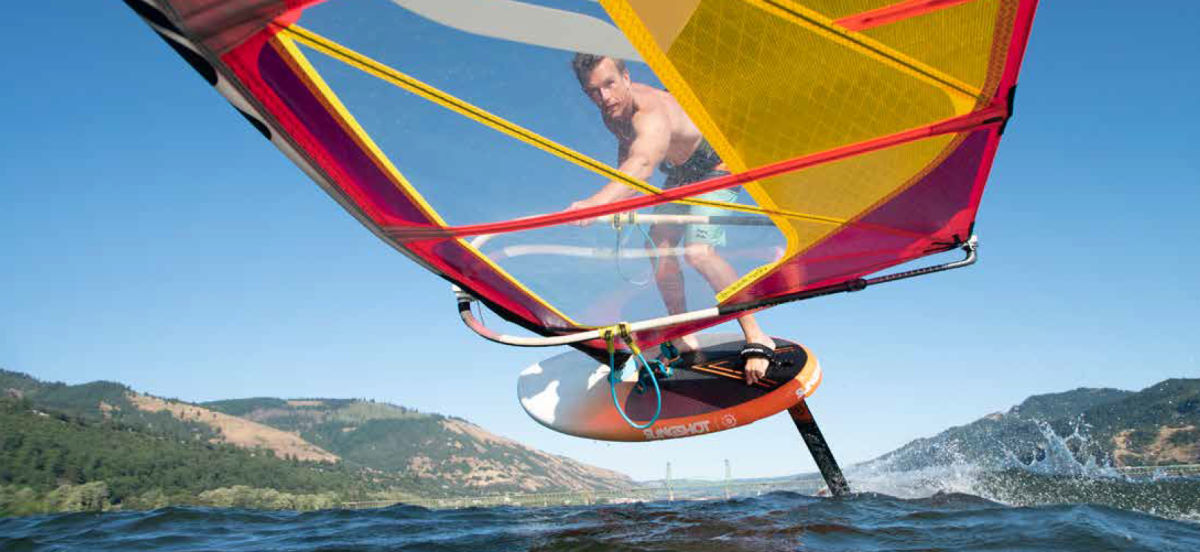
I personally feel the race to the small sinker boards shouldn't be a race at all. They may have their niche in areas where it's just raging and super windy, but in our area where we have such different wind ranges and lighter days, it's kind of limiting and can be a lot of work. I feel you're not sacrificing much by staying with a little larger board. It gives you that peace-of-mind when you fall off foil in rock and rolling conditions. You can get up easier, and I think the trade-offs when you're riding surf are very small.
Tucker: I think a lot of more experienced riders are going to want a narrower board and something that's nimble. With some of the new board designs being a little longer and narrower, you can get away with a larger board and still have that feel, but gain all the benefits of a longer board like stability, ease-of-use, and landing jumps.
People that were going to the really small boards were into the flippy, spinny, jumpy stuff a lot of times, and while that works in really high winds, the reality is that when you're learning new stuff or you're in conditions that aren't blowing 40, riding away on a jump where you go huge on a tiny board that's going to sink you up to your neck is not ideal because, even if you do ride away, it's going to look terrible. You're going to sink first, then you're going to have to pump your way out of the hole. So even the high-end riders are riding a little higher volume, even in freestyle, because it gives them more board to land on and it gives them more forgiveness. That way they can go out there and do 1080s and back flips 30ft in the air and still recover when they come down to land. You don't need to go with a 30L prone board to have a nimble, fun board.
Jeff: I would agree. We're not saying that there's not still a place in the market for the sinker, and you can have one in your quiver, but we're looking at the general trends for most of the people that are riding in the market, and we feel that the sinker is going to be a less trending, smaller side of the market.
Tucker: For sure. Rather than going with the 40L board, you go with a narrower 60L board and ride that in most conditions, and it's going to feel very much the same in terms of performance, only with a lot more forgiveness.
Foil Shapes
Tucker: I think a lot of the market is into winging, and having more efficient, higher aspect, thinner foil sections is definitely the trend. Even with something like prone foiling, the level has progressed to a point where you don't need these super low aspect, thick designs that have a narrow speed range just to get you on foil. The board designs are getting better and the foil designs are getting better, so you can ride faster equipment without much of a detriment to your performance and range.
Jeff: Of course, each brand will still have their lower aspect, thicker foil for that ease of lift and slow speed for the beginner, but I think there's going to be less focus on it. Even with the mid-aspect wings you get less drag. Coupled with the right board and wing, there's just not as much need for it.
Tucker: Right. A lot of the designs, rather than being very low aspect with a huge chord and thick foil section, may still be a big foil but are moving towards a little higher aspect and a little thinner. You still get a lot of the benefit out of a big foil with that low speed lift, but you gain a lot of range and efficiency on the high end as well.
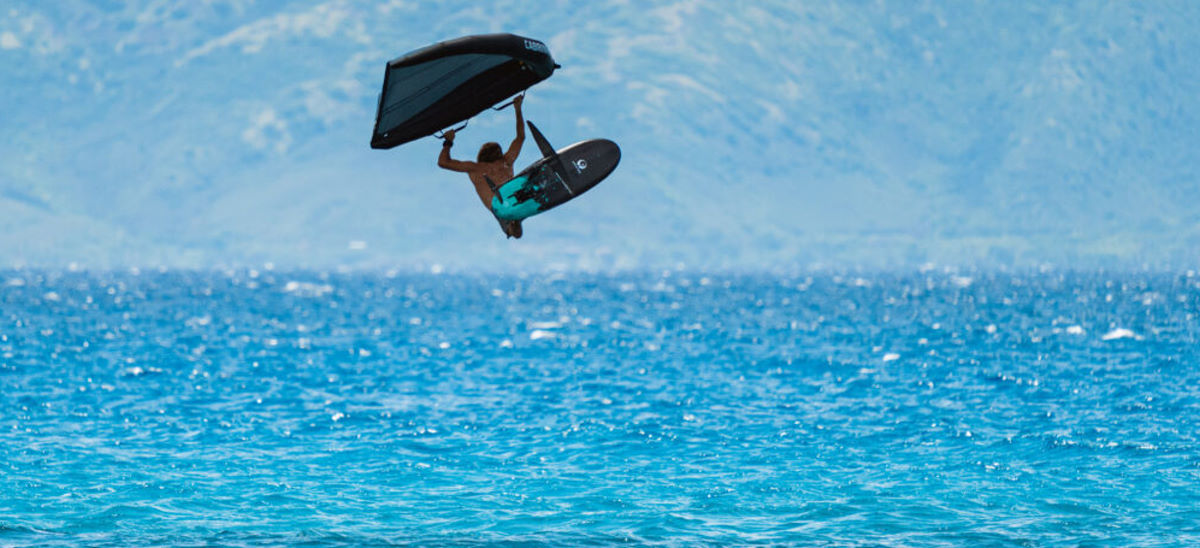
Jeff: And as you start to do your jibes, it gives you more speed for transitioning. At first you're really stoked about riding, but then it becomes about turning, and you find you're limited on a big, low-aspect wing. So that is something that might become a little less focused on in the foil lineups for the brands.
Tucker: In the time since foiling was a brand new sport, a lot those riders are progressing and getting into stuff that's a little faster, so naturally the trend of things gets faster.
Jeff: As we get better in the industry with our products, we continue to enhance the experience and the ease of accessibility, and that leads us into this next one: the shorter fuselages.
Fuselage Lengths
Tucker: It's interesting how fuselages have gotten crazy short for some people chasing that maneuverability, tight turning, and snap-ability. If you look back a few years, stabilizers were huge and thick, so the only way you could unlock that was to pull the stabilizer closer to the front wing and make it feel looser. You weren't too worried about losing the glide in the low end because those thick front wings didn't have much glide to begin with.
That's a different style of riding and there are certainly going to be people that still enjoy that, but for the most part things are trending towards longer fuselages. When I say longer, I mean standard fuselages in that 650-750mm range and not the super crazy, ultra-mega-short ones we've seen in the past.
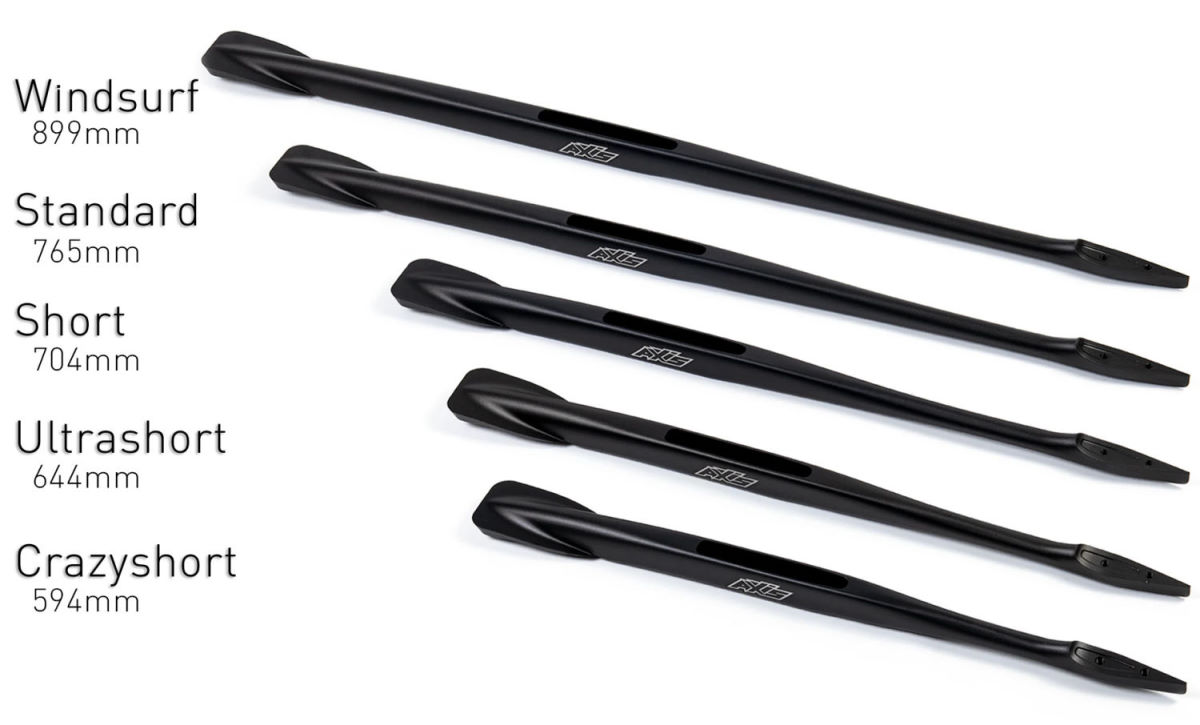
Jeff: That's been my experience, and I think you hit it really well there. The development of the front wings has made it where you can get that performance in pivoting and surf that you would have wanted a smaller fuselage for. You don't need that now, paired with the right front wing. With the advancements that are being made, the standard length gives you a little bit more stability and ease-of-use, and you can still access the performance that you were trying to get with a shorter fuselage without the pitchiness that you'd get.
Tucker: You can still get that feeling with a smaller stabilizer, and then you're removing drag, too. You get better top speed and better glide, so that's part of it, but it's also just the evolution of the sport. Rather than these slow, snappy turns that you're doing because the front wing is limiting your top speed, now you're riding twice as fast and making those drawn-out power turns.
Stabilizer Sizes
Jeff: Huge stabilizers are trending out. You don't need that.
Tucker: Even if you have a big stabilizer, they're definitely getting thinner and higher aspect. You can still gain that glide, low speed lift, and pump-ability, but you're not adding so much drag to the equation.

Jeff: And as you're in the sport longer, you do notice the drag. The subtle drag makes a difference when you're riding.
Wing Inflation Systems
Tucker: One pump inflation is here to stay for kiting; no one wants to pump up six bladders independently. But in winging we're seeing that independent inflation systems are becoming the norm. We've preferred this for a while now; it's nice to be able to inflate those to different pressures and to have an isolated system for the sake of safety and maintenance. Fewer hoses and fewer connections make it easier to change or patch a bladder. The hoses are just another fail point, and it inflates the cost of the wings when you're adding complexity, so there's really no downside to connecting your hose to two different spots that are 6 inches away from each other. It isn't difficult at all.
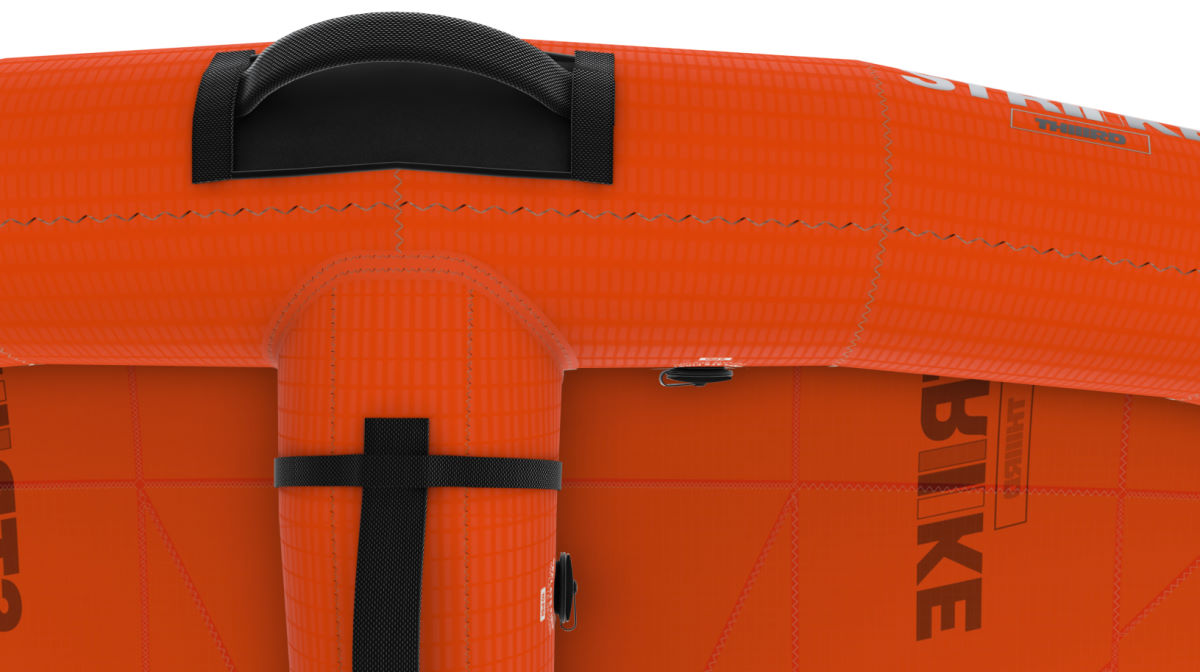
It's especially nice when you're pumping each bladder up to a specific PSI. You also won't have any bleeding between the leading edge and the strut. You want your strut to be really stiff at all times, but if you're connecting it to the leading edge and not clamping that off, all of a sudden your strut can sometimes bleed pressure into the leading edge, based on how you're loading it up and what's going on in the wing.
Jeff: When the brands are looking at their R&D and trending the designs they're making, being able to have the separate inflation lets them get those performance enhancements.
Tucker: Right. You can choose materials based on specific pressures and specific loads for that one piece. You can talk about the isolated struts without talking about the entire frame and how it works in conjunction with one another. They can make the strut go to 10 psi and keep the leading edge a little lighter and a bit more flexible at only 7 PSI. That really changes how you can design the wing and what type of materials and what sort of construction you can use.
Wing Windows
Jeff: This next one could be a little controversial. It can depend on where you ride, but what about big windows on your wing? I'm about two and a half years into winging now, and I never really looked through them when I was learning. There were so many other things to focus on that windows were the last of my priorities. Once I did get more comfortable winging, I found it was easier just to lift up my wing to look, so I don't think I used the window a lot.
Now that I've been in winging longer, I can see some of the negatives a window can have: the added weight, the material itself. Coming from years of windsurfing, I can say we have come a long way with folding them. Now you can crease them and fold them, and for the most part that doesn't cause issues, but I don't think the windows really enhance the whole riding experience.

Tucker: Yeah, since the beginning we've had this debate about whether there should be windows. I don't think it's necessary. If I was building a custom wing for me, it would never have windows. I could see situations where you would want windows for racing or really crowded areas, though. Some people just feel more comfortable with that. However, I would say never to use it as a crutch. Never trust it. You'll always still want to look around you outside of the window because they're kind of like wearing blinders.
We're not saying that windows are going away; I don't think that's the case, but windows are getting slimmer and they're getting placed in better locations where they're useful for when you actually want to use them. There are times where I like a window: certain back winding, looking at a wave face, and things like that. There are times where you can find it useful, though I still wouldn't put one on a wing specifically for me.
Jeff: When I was out at Hood River for AWSI, there was a lot of activity out there, and I do see your point there. The placements have gotten better for when we just do a quick view. I like what you said about blinders: don't rely on it. Still do the pick-up and be aware of your surroundings.
Wing Handle Styles
Tucker: I'd say soft handles are trending away. Most brands are going to hard handles, or at least having an option for hard handles. That seems to be what people are asking for nowadays; you don't get too many calls where people say they specifically want soft handles.
Jeff: I agree 100 percent. And I think it'd be hard to argue against that hard handles are far easier for people to initiate the power of the wing and get all the performance out of the wing that they need. Soft handles still may have a place; some people say that in higher winds it may be a little less fatiguing in your hands, but I think the designs of the wings are such now that the hard handles are definitely a good pairing.
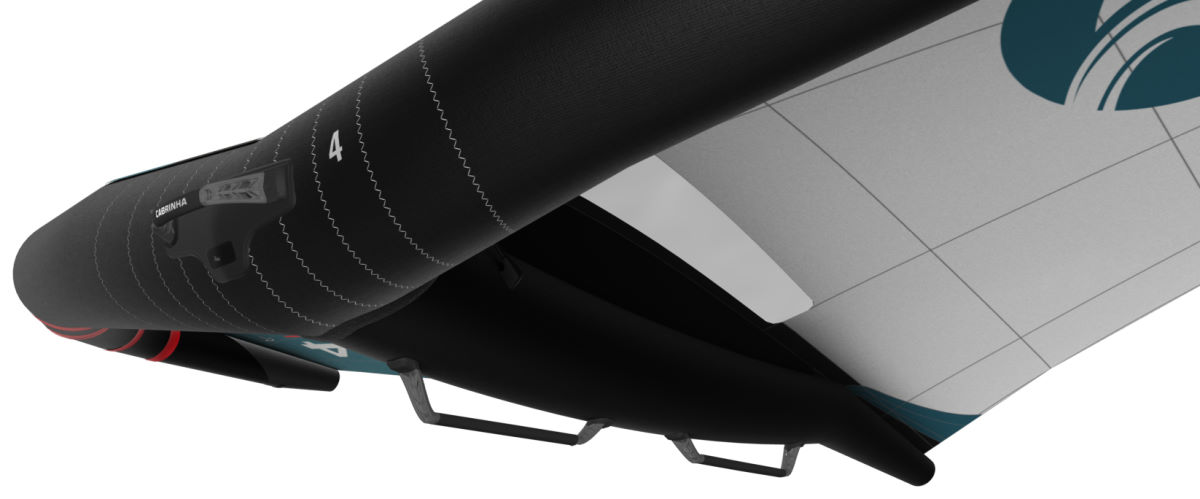
Tucker: Yeah, they definitely figured it out. I think it opens up the adaptability of the wing to multiple riders. When you put soft handles on, there's a specific point where you want to hang on to those, and if you're not the average rider in that specific wind they thought of in designing that, it's going to be a little off. Then you're going to have more pressure in your back hand or you're going to have to really death grip the thing in a certain way to hold it where you want it. For the most part, I'm not upset at soft handles; I like a lot of wings that have soft handles.
Jeff: The Strike's one of my favorites. I spent all fall on the Strike V3 soft handle, but I like it in size 3.5 or 4. Soft handles don't typically bug me as much down there because it's nuking and you put that thing where you need to go and you're moving. So I have a lot of experience with soft handles, but I agree. It's going to be a smaller niche.
Tucker: For most wings you wouldn't be upset if it had hard handles rather than soft. You don't really know until you try it.
Canopy Materials
Jeff: Another one would be the standard Dacron or single-strand ripstop.
Tucker: Every brand is leveling up their construction. Even if it is Dacron, they're going with different grades of Dacron, double-layering, certain layouts of staggered grades of Dacron, and things like that. Single-strand ripstop is pretty much a thing of the past in winging. Nobody's using it. It is double-strand or more a lot of times, even using materials outside of ripstop now as they look for stiffer, longer-lasting canopies. Wings do take a lot of load, and people are riding them so much more powered-up and aggressively than they had in the past.

Wing Panel Layouts
Jeff: What about the square/rectangular panel layouts on the wing design?
Tucker: A lot of brands are going into radial panel layouts. They're refining how they're building wings because of issues that they've seen in the past. The easiest way to make a wing is with rectangular panel layouts; everything's square and easy to put together and it's easy to R&D. But with radial layouts you can really plan and map out how those loads are distributed through the wing and reinforce it in the areas you want. That means a longer-lasting, higher-performance wing with a lighter weight because you can use different materials that are laid out in a certain way.
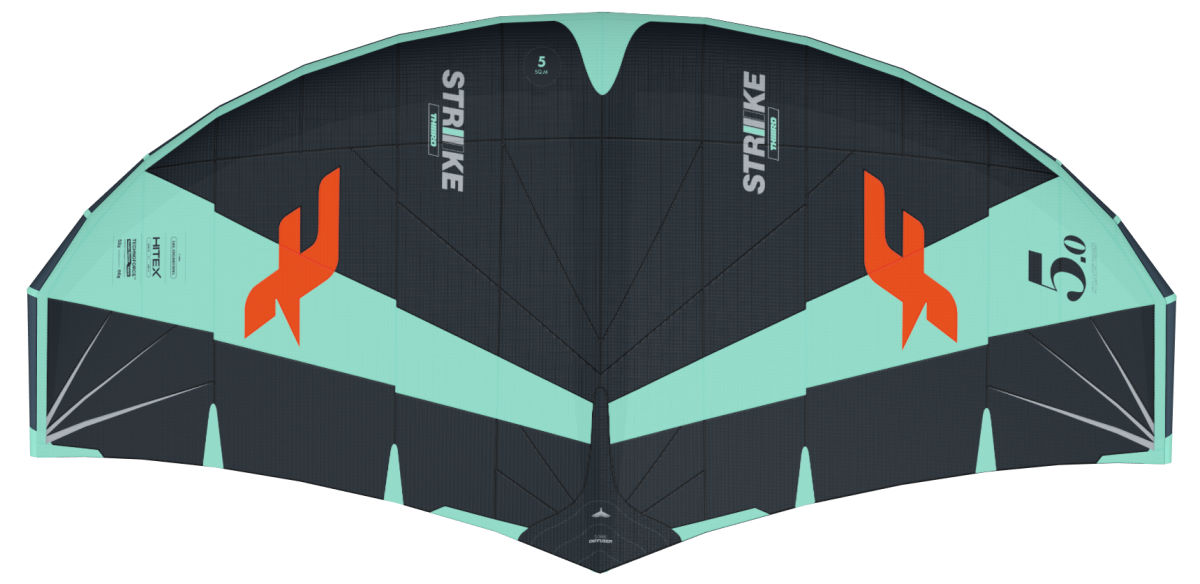
Jeff: And we're seeing that trend.
Tucker: Big time. Almost every brand is moving to some variation of that. They're paying a lot of attention to how the load paths move outside of the frame through the canopy.
Booms
Jeff: What about booms? I windsurfed for years, so when I first started getting into winging I thought a boom was where I wanted to be. However, I'm not a big fan of the boom. The new handles are starting to trend where they're actually expanding to quite a bit of the strut, so there's not much additional room with a boom. I think booms are not going to be as popular moving forward because, from a beginner standpoint, I think booms are harder because you don't know where to put your hands to get the best performance out of the wing.
When you have two handles, it limits your range to where you need to be for the sweet spot for the wing. That's how it was engineered. When I had this single-color, huge boom, I remember as a beginner having to struggle to figure out where to put my hands to access the full potential of the wing. That's one of the reasons why I think we're going to see less of the booms, the other one being that they add weight. Now that the two rigid handle development has come along, I think there's really no need for that long boom.
Tucker: I'm going to disagree with you on this point. It's not that I ride boom wings all the time, and I don't even necessarily prefer them myself, but I really love them for freeriding. The Slick and the Ocean Rodeo boom are good ones. There will be some more boom options coming into the market from brands this year, though I can't specifically name which, but it'll be more than just the Duotone Slick that has a boom this year.
There are a certain number of people that really love the boom, and I think a lot of that comes from the windsurfing end. It can also be for one-handed wing flying, so that's why we see Duotone extending the front wing handle on the Unit for 2024 so it's almost like a half boom. The rear handle is smaller, but the long front handle is there so you can one-hand the wing in the surf.
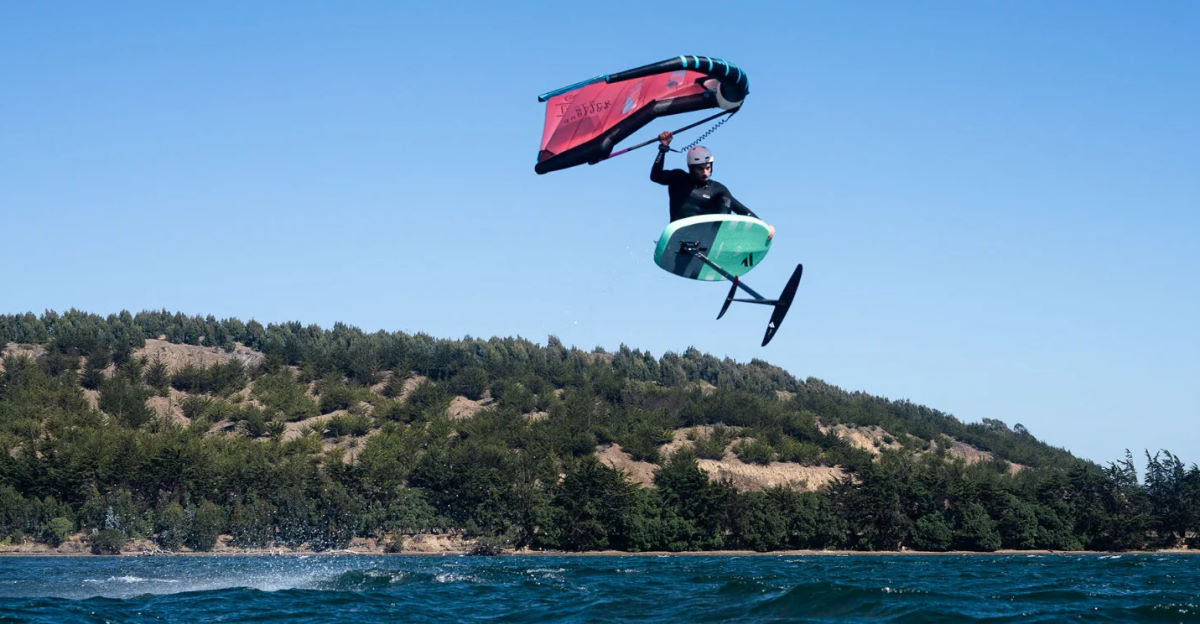
Also, when a new rider is learning their first transitions and maneuvering their hands in different ways, the boom is impossible to miss. There's no middle section to miss the grab. They also tend to stand off the wing a little bit more, so if you swing your hand in the general vicinity of where that thing is, you're going to find it. Then you can always adjust where you want to be.
However, the biggest reason I would have against booms is the portability of them. It's a 3-and-a-half foot long pole. Other than that piece, the wing packs into a relatively small backpack, so traveling with a boom or carrying it in vehicles can be a little bit more cumbersome. If they can solve that problem with a two-piece, or even just a long front handle like Duotone's doing, that's a really good compromise for those people who do still want that boom. But there's no real reason to have a boom outside of being able to one-hand the wing. There are some guys doing freestyle moves where you need to be able to one-hand the wing, and sometimes being able to one-hand that with some power in the middle in the surf is really fun. It opens up a world that you normally don't have access to.
Jeff: It looks like it came full circle. You still see it in the market, but maybe not as broad, which is where I was coming from. I just don't see it being as prevalent.
Tucker: Yeah, I don't think it's going to be the answer for everyone, and I don't think every wing's going to have a boom in the future. In fact, I think that most probably won't. But it'll always be there; I think there's a certain amount of people that love the boom and it does have a tangible benefit that won't go away.
Jeff: Well, I guess time will tell. We'll see how that trends. I don't sell a lot of boom wings to customers other than the Duotone Slick. Maybe my reasons are right, and maybe they're not. What about the soft, flexible wings?
Wing Flex
Tucker: That kind of goes along with the standard Dacron and ripstop. In the past, wings were built to flex a little bit. I'm seeing most brands trending away from that because they don't want to put that kind of unpredictable load on the wing, and also because most people are riding the wings more powered up now. They don't want that spongy feeling; they want a direct, efficient layout. It's hard to design a wing when you don't know how much it's going to flex because you don't know what wind it's going to be in, you don't know the rider riding it, or how they're going to push it. You do still see some softer, flexible wings in more affordable beginner categories, which is fine, but I would say most of the designs going forward are towards something stiffer and more rigid.
Jeff: When you flag the wing out and it stays somewhat stable so you can find that sweet spot with the design, I think we've got a win-win.
Tucker: The PPC M1 is extremely stiff. It's probably the stiffest wing in the market right now and it flags out great. The Ocean Rodeo Glide in both the A series and the AA series both are very stiff, and both flag out phenomenally. So I don't think those things are mutually exclusive.
Jeff: In the early stages that may have been the trade-off. Another reason for flex was the way you pump to get up. Sometimes you can get that "whip effect" at the low end to get that extra boost, but I think some of the focus and the design is going elsewhere to get the same effect without having to have that looseness.
Tucker: Yeah, you can build in that grunt and that power without having a lot of flex. Case in point is our award winner, the Loft Pro. That thing's stiff as a board but has tons of low-end power and pumps like a beast.
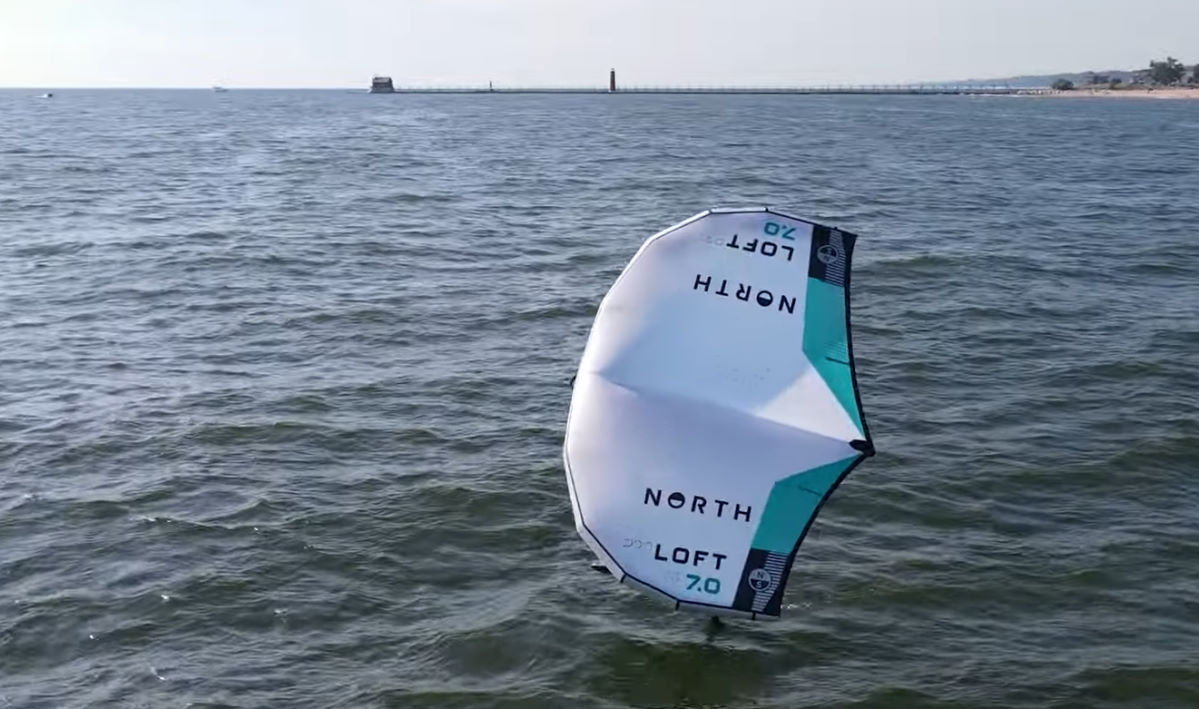
Foil Drive Solutions
Jeff: How about for tow-ins and downwind struggles? Tow-ins behind a boat or a jet ski might be trending out. Downwind was a big trend, but you've got to live in the right spot and be really skilled and in shape with the right conditions and the right gear. There are a lot of variables that have to be right for it to work, so you see that struggle going out. What's trending in?
Tucker: The Foil Drives, man. Foil Drive's taking over the world. Everybody that foils wants a Foil Drive, and there's a reason for it. People can go out and tow themselves in to waves. We can go ride waves together without you having to drive the ski, then switch out with me riding the ski. That means you get twice as much ride time.
With downwind struggles, there are so many people that love the idea of downwind. It's such a fascinating, amazing sport, and it is so cool to be able to just cruise on wave power with no wind affecting you, just gliding and chilling. There's so much adventure involved in that, but a lot of people don't have that skill, they haven't built that technique, they don't have the super high-end, top-of-the-line, latest, greatest gear, or maybe they don't have the right conditions. The Foil Drive lets them get out there and have that same kind of experience or learn as they're having fun, without walking miles up the beach or getting stranded.
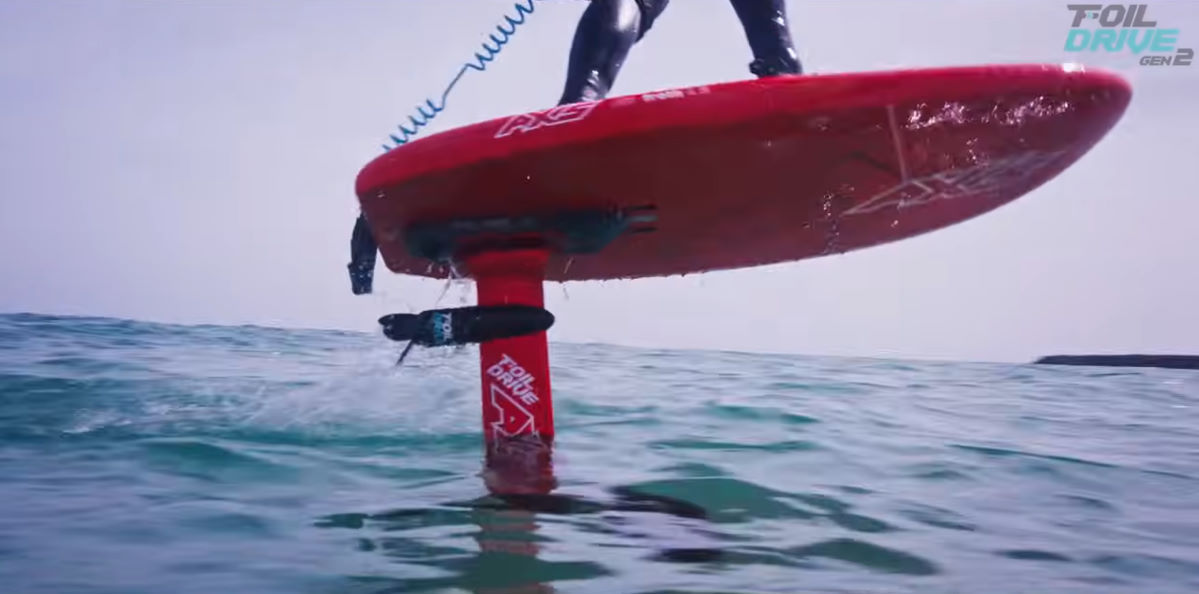
Jeff: Speaking from experience, it can decrease the learning curve since you won't spend as much time in the water with that Foil Drive making up for the lack of skill, power, and ability. It still takes time to adjust to the Foil Drive and get rolling, but you're having fun, and it gives you that access to getting in the right spot over and over again far easier.
Tucker: You can try new things and learn how to read the waves better, rather than just struggling and praying that you're going to stay gliding and on foil. You can take risks and mess up, and it's okay. You're not stressing about it; you're having fun. And you can go out on days when you normally wouldn't when the conditions are kind of iffy or your gear is not quite right, because the Foil Drive is going to allow you to do that.
Board Lengths
Jeff: Board design is one that kind of excites me, believe it or not. I think we're trending away from a short, chunky board. When we say short and chunky, we mean something that has higher volume that's not very long but is wide, which tends to be a lot of what we've seen in the last three or four years and what a lot of riders have now and ride. But now we're starting to see more things not focusing so much on volume, but on a longer board that is thinner and disperses the volume, where volume isn't the number one factor for performance.
When I first started riding the F-One S-Wing foilboard that has that longer, thinner profile, I was amazed at a couple of the benefits. First of all, it's the versatility in using it in lighter winds and higher winds. It gets that board speed up faster than a short, chunkier board. Even more important, when it was just raging out there and it's wavy and there's so much turbulence on the water, the longer, narrower boards help me to get back up on foil so much faster. When you have a higher aspect foil and you're charging in waves and you go down and you're trying to get back up, you want to keep that board flat and be able to get the board speed to pop back up again. What I was finding in my shorter, chunkier, but similar volume boards was that it would want to submarine. I use the word "corky" because I'd pitch forward and pitch back as I got rolling and tried to get that speed going. So I see that trend slowing down from that boxier, thicker board to a more elongated board.
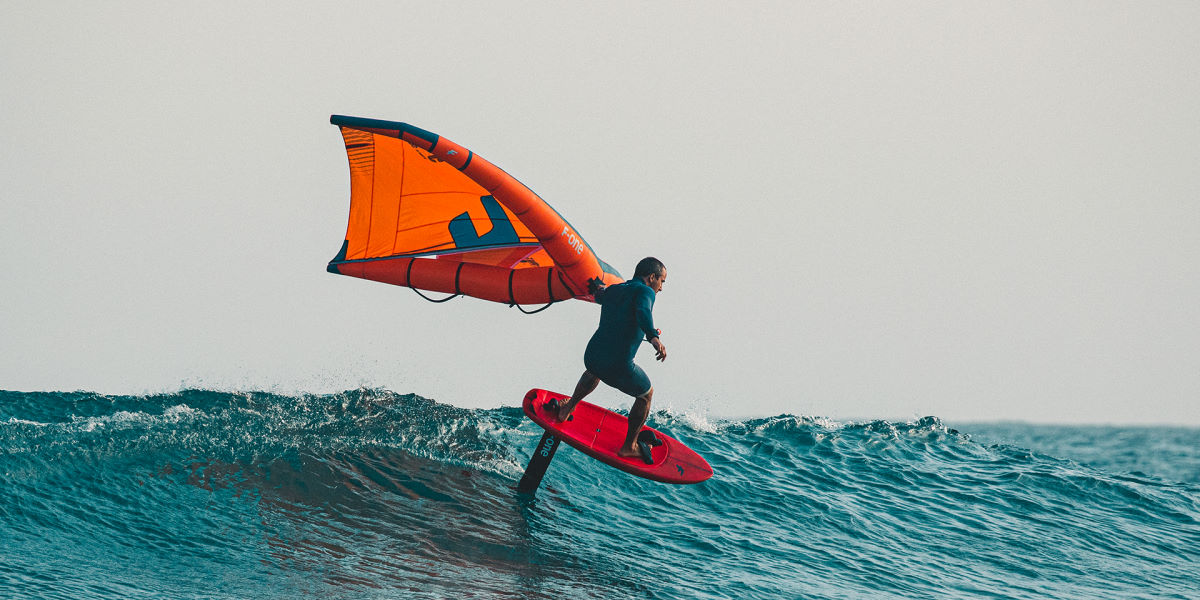
Tucker: Beginner boards are still going to be that way. They might start to trend a little bit narrower and longer, following the intermediate/advanced trend, but more people will get out of the beginner boards into something for more progression while wanting to keep that ease-of-use. That's the point we talked about with how sinker boards are disappearing because the ease-of-use isn't there. Here, you pick your board based on your length, and that's your ease-of-use. Your width determines your performance, as well as the thickness of the board. The thinner and narrower the board, the higher your performance. Even if it's a few inches longer, it's going to be feeling much nicer and feel much more like a prone board rather than a SUP.
The way I usually choose those is by picking the length first. Then you're generally sizing down in your volume and sizing down on your width. A board around 75 liters may have been my go-to in the past, but now my go-to is about 60 liters but a couple inches longer. It's much more of a surfy shape, but it's just as easy to ride. The lower volume sits lower in the water and gives you a lower center of gravity, which gets you below the water's energy level at the surface where you're getting bounced around so much in nasty conditions. It's just easier to ride because of that length. Once you have some decent technique, you don't need as much volume under your feet or as much width.
Jeff: That's where I was at. I was on a 4'11, 75 L and I went to a 5'2, 70 L. I added length but went little narrower, and I find it a lot easier to engage in the crazier conditions and wave conditions.
Summary
I think we covered all the trends. It's quite a list, but I think it's good to see that we're learning from the past and applying some new designs as we move forward into designs that get us all in the water more and make the sport easier to engage with and enjoy.
Tucker: More fun- that's what it's all about. If you have any questions or want some suggestions, reach out to us. That's what we're here for and we're happy to point you in the right direction for your situation, so give us a jingle.
MACkite Subscription Links:
YouTube | Instagram | Spotify Oddcasts
Contact MACkite Below:
800.622.4655 | Kiteboarder@MACkite.com | LIVE Chat Messenger


Recent Posts
-
Kiteboarding Tricks | How To Do A Backroll Hat Drag
You can use a little creativity to switch up even the more basic tricks and add a little f …26th Jul 2024 -
KT Ginxu Step-Bottom and Foil Drive Systems | A Perfect Match?
The step-bottom feature of the KT Ginxu foilboards is a big help in releasing the surface te …24th Jul 2024 -
Starboard Ace Air Inflatable Wing Foilboard Review
It's Wing Wednesday, and today Tucker's got an inflatable foilboard, the 2024 Starboard Ace …23rd Jul 2024

